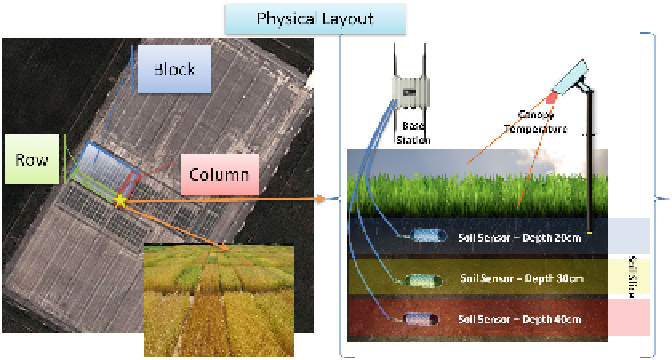Database Reference
In-Depth Information
Fig. 3.
Phenonet data model - physical
moisture at a particular depth is mapped to the stream, associated to a node. In
summary, the stream maps to the physical sensor that monitors a phenomenon
while nodes and experiments are used for logical grouping at different levels.
The metadata associated at each level is critical for providing contextual
information. In the above example, for the experiment level, metadata could
include information such as the year when the experiment was run; the block
identification, the date the experiment was sown; description about the objec-
tives of the experiment and even descriptions about the experimental site like
e.g. soil type. At the node level the most relevant metadata fields are the crop
genotype, treatments applied to individual experimental units and the relative
location of the experimental unit within the experimental plot (in most cases
for this application a row/column notation is used). At the stream level, in this
example the depth, the sensor type and the sensor serial number are the most
relevant metadata fields, while sensor information like the date of calibration or
settings of the sensor can also be important depending on experiment.
3 Cloud-Based Open Source Middleware for Internet
of Things (OpenIoT)
The EU FP7 OpenIoT project (
http://openiot.eu/
)
is to provide an open source
blueprint infra-structure for on-demand utility-based IoT applications, i.e., appli-
cations that promote and realise the convergence of cloud-computing with the
Internet-of-Things. The heart of this infrastructure comprises a middleware
framework, which facilitates service providers to deploy and monitor IoT appli-
cations in the cloud, while also enables service integrators and end-users to access
and orchestrate internet-connected objects (ICOs) and their data.

Search WWH ::

Custom Search